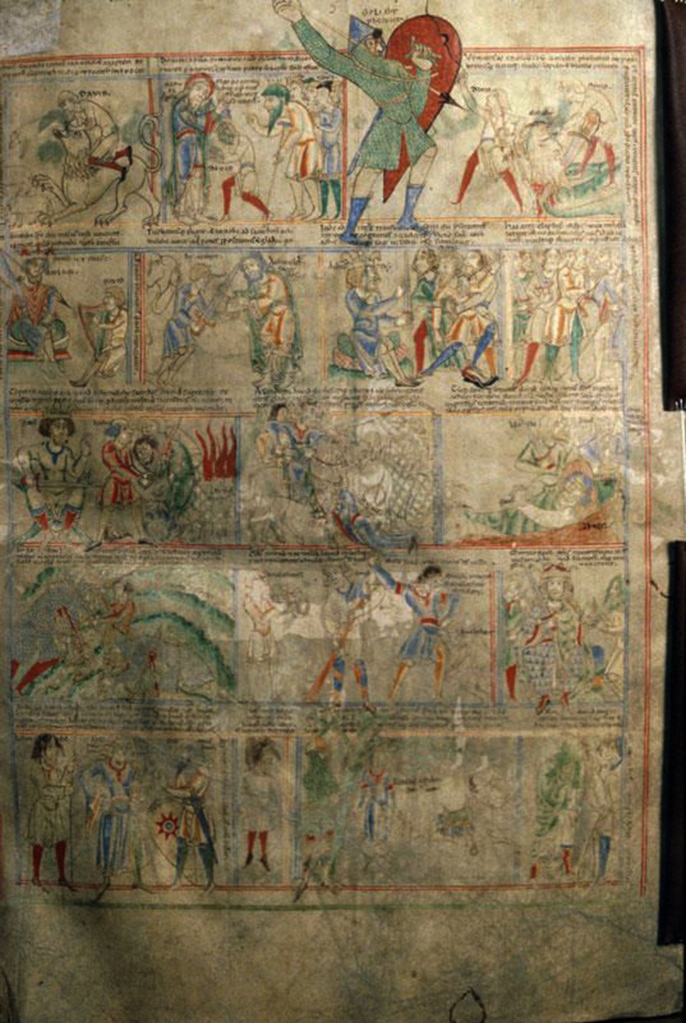As mentioned in the previous post, the format of modern comic books has been linked to medieval manuscripts by many scholars. Perhaps the most striking example is folio 13r-1 from the Dijon BM MS.14, a 12th-century manuscript known as the Bible of Stephen Harding.

Hailing from Burgundy, France, this manuscript dates from approximately 1109-1111, and its attribution is given to St. Stephen Harding, one of the founders of the Cistercian Order. Although scholars believe St. Stephen Harding to be the scribe, the illuminations appear to be by the hand of three separate artists deploying three distinctive styles.
In this example, folio 13r-1, the artist is illustrating scenes from the life of David in a sequential format complete with accompanying narrative. The page design is read in consecutive panels, from left to right, with text blocks integrated with the images to identify characters and clarify their actions. (Possible precursor to speech balloons?)
The most eye-catching feature of this page is the enlarged image of Goliath. His figure bursts through the framework of the panels, with spear raised in a pose reminiscent of a comic book superhero — or here, the supervillain. The giant’s dramatic figure also draws the viewer’s attention to one of the most prominent stories from King David’s life by further increasing the drama and action of the scene.
However, the use of sequential visual storytelling is not unique to this manuscript. For example, the Bayeux Tapestry, created in the 11th-century, is another example of a sequential narrative. The Tapestry depicts events of the Norman Conquest of England from the point of view of the conquering Normans. There are many iconographic similarities between this monumental embroidery and the folio from the Bible of Stephen Harding, including integrated text providing character identifications and clarification of actions in scenes.


Odo, Musée de la Tapisserie de Bayeux,
Bayeaux, France
Perhaps the origin of the modern-day comic book dates even further back in time.